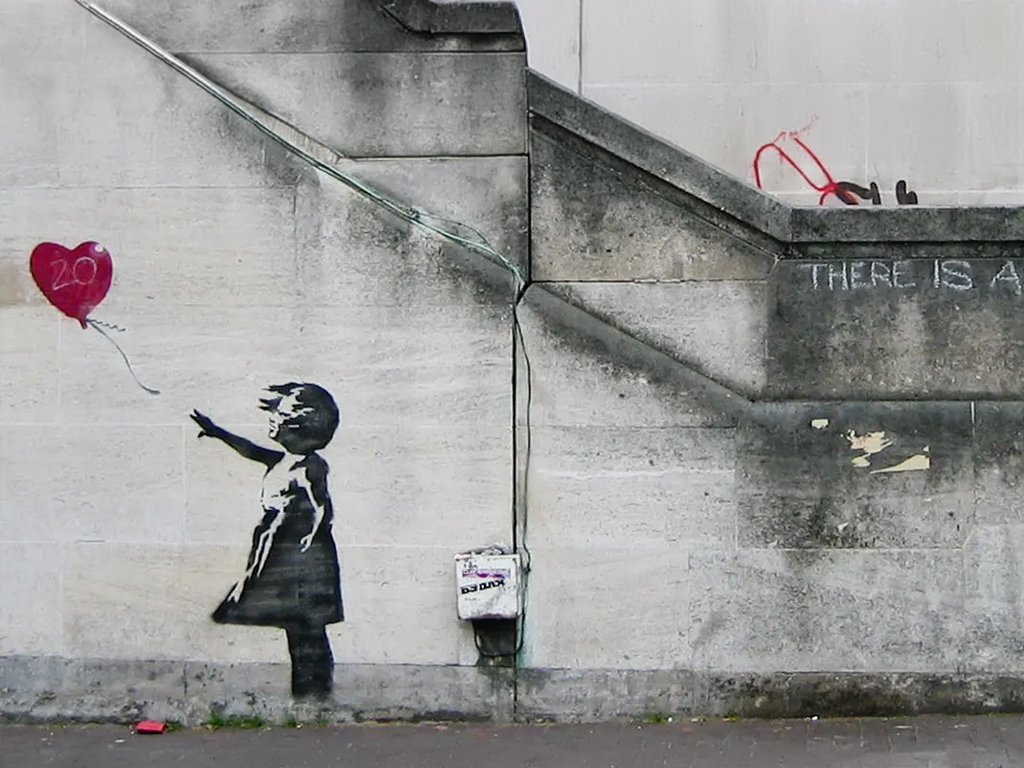Of all the current trends in the contemporary art world, none has had such a meteoric rise, or captured as much public attention, as street art. This genre of artworks, encapsulating techniques as varied as spray painted tags, complex screen prints, mosaics and even knitting, has turned the art world on its head in the past few decades, with huge implications for artists, sellers, and investors. And, although we might all be familiar with popular artists like Banksy or Mr Brainwash, these big names are only one facet of this ever-growing and changing art movement.
The origins of street art
Although people have been painting on walls for as long as we have had walls – or caves, for that matter – the street art movement as we know it finds its origins in the cultural revolutions of the 1960s and 70s, as graffiti became popular in the urban communities of New York and Philadelphia.
The artworks often carried social and political messages, either overtly or subtly. Of course, the very fact that the art was considered vandalism was in itself an anti-establishment message, and the open accessibility of artwork in public spaces was another type of message: art for all.
Street art styles
Street art is no longer limited to artworks that have literally been created on the street. However, current styles within the street art movement are generally linked to techniques that were developed to create artworks as quickly as possible. Some popular styles include:
- Spray paint tags are perhaps the best-known form of street art; not only because this was one of the forms that started the movement, but because of its visually distinctive style. Tag artists will often have a specific tag that they use, either their street art name, a phrase, or a stylised image, which can be quickly repeated and easily recognised.
- Murals are larger and more elaborate than tags, although they often include typographic elements. Larger artworks composed of bold, graphic spray-painted letters are a common image associated with street art, and remain a popular form of artwork found in urban areas. However, street art murals can include any subject matter, and are not always created with spray paint; traditional brushwork or any number of other techniques might be used.
- Stencils are a popular way for street artists to add more complex imagery to their artworks, as they can create the stencils beforehand and apply the image with spray paint quickly. Banksy is particularly well known for his multi-layered stencils which allow highlights and shadows to be included in the image.
- Fly posting is another option for artists to showcase more complex and time-consuming techniques. A poster or sticker can be worked on in advance, then adhered to any surface for an instant installation. A popular version of this, related to tagging, are name tags that an artist will ‘fill in’ before sticking to walls or road signs.
- 3D street artworks can include mosaics, with pieces of tile or found objects added to a wall. However, as street art has now moved into more traditional gallery spaces, you might also find a sculpture or other 3D work that has been created with street art influences, even if it were not something that you would typically find on the streets.
Revolution evolution
The origins of street art mean that this art genre is closely associated with subversion of the norm, cultural revolution, and the representation of marginalised communities. These ideas continue to influence the current street art world – although, as street art has become more marketable, there are many artists who use the aesthetics of street art without any identifiable nods to the social or cultural roots of the movement.
Of course, there are still those who see street art as a type of vandalism, but this belief is swiftly dying out. Even in the earlier days of the street art movement, it did not take long before the artworks were starting to gain recognition. By the 80s, there were already some big names in the art world with links to street art and graffiti, like Jean-Michel Basquiat and Keith Haring. Since then, we have seen a huge rise in street artists making it in the more traditional art market.
Current cultural trends are much more accepting of artworks with provocative messages and imagery, and graffiti in general has become an established form of art – it would not be unusual to find a street art style artwork in any home in the UK.
The street art market
The incredibly steep rise in the value of street art means that many would-be investors are often looking for “the next Banksy” in the hopes that they will be able to sell an £150 print for a cool million or so in a few years’ time. Unfortunately – or fortunately, if you were one of the lucky ones who did manage to invest early – a career like Banksy’s would be almost impossible for another artist to replicate.
Nevertheless, the street art market is still active and growing, with high demand for new artists, and an active presence in the secondary market. Finding a street artist with a proven record of success, represented by a reputable seller, is the best way to set yourself up for an investment. But, as any art professional will tell you, the investment is only ever worth it if you love the art itself. In the world of street art, there’s a lot of love to go around.





